FREE LECTURE OF
PORTFOLIO
Here is an example.
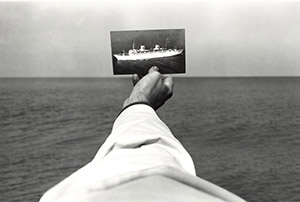
Kenneth Josephson, New York State, 1970.
Gelatin silver print. 10-7/8 x 13-7/8 inches.
Collection of the Madison Museum of Contemporary Art.
In the foreground the photographer’s right hand holds up the photo of a large white boat. We don’t know if it’s a postcard or a photo he made himself. His arm, right in the middle, seems to go straight out of the lens. In the background the horizon line separates the sky and the sea. The perspective of the arm, very marked, guides the gaze towards the boat. Then, the eye naturally glides to the sea following the movement of the boat moving to the left. The sensation of movement is reinforced by the fact that the photograph is not held horizontally but leans a little to the left (while waiting to lean to the right at the next wave?).
The image is composed of simple geometric shapes: three triangles and three rectangles. It contains four values, white for the arm, black for the photo, dark grey for the sea and light grey for the sky. The geometric simplicity of the construction gives it immediate readability and efficiency.
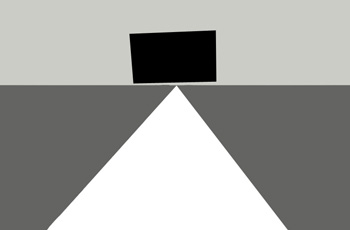
Kenneth Josephson, american photographer born in 1932 often used this device during the 70s and 80s. The paper print between the subject and the device disturbs our perception. His hand showing a photograph prevents us from seeing the sea: impossible to look at this photo without being aware of the photographer’s presence there, at that time. Why not just photograph the sky and the sea like Hiroshi Sugimoto did and let us focus on our sensations ?
But by the way, is that the photographer’s hand? On the picture of Drottningholm Castle that he made in 1967, there is no doubt: he holds the image of the left hand and the camera of the right hand. The left hand is on the left and the eye (the lens) is in the center. The photographer is facing the subject, the device is obvious.
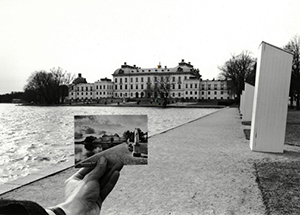
For the boat, it’s very different: the right hand holds the picture. Did K. Josephson become left-handed? The arm is in the center, forming a perfect axial symmetry. Did he put the camera on his shoulder turning from profile to subject? In this case, he pressed the trigger on the right of the device with his left hand. It is possible, but very uncomfortable and not very precise! Especially to get a perfectly horizontal horizon line and the boat slightly inclined.
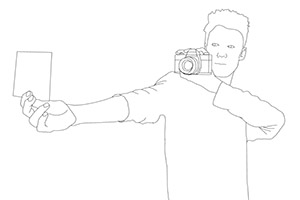
The picture was probably taken on a stand-up with a focal length of 35 mm or with a focal length equivalent to 24x36. In any case, even if we have no information about the device used, the final image is homothetic in 24x36 format. The focus is done on the boat and the depth of field is important, which implies a very small aperture.
K. Josephson masters his technique perfectly and puts it at the service of his subject which is much more than a trompe-l'oeil. If it were a simple graphic game (like the perspective game in his Drottningholm photo), he would have given up and placed the picture of the boat in the water and not in the sky. The effect would have been much more realistic.

But reality doesn’t interest photographers and the question is rather: What triggers the desire to photograph?
On the desire to photograph, Jean Baudrillard says:
"[...] Seen in a global perspective, on the side of meaning, the world is very disappointing. Seen in detail and by surprise, it is always of perfect evidence."
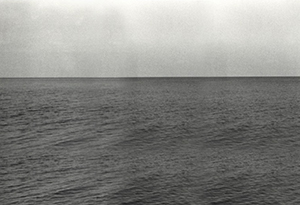
For K. Josephson, the sea is not enough, he needs an extra boat. For him, the sea is not a subject. For it to become one, he must add his point of view, his opinion. He does not say: "Here is the sea". He says, "This is the sea I saw that day, that place". In this sense, this image is a real reflection on what motivates the photographic act and it is not by chance that Stephen Shore chose this image for the cover of his book "Lesson in photography", as a synthesis in an image (in an image in the image!) of his approach to photography.